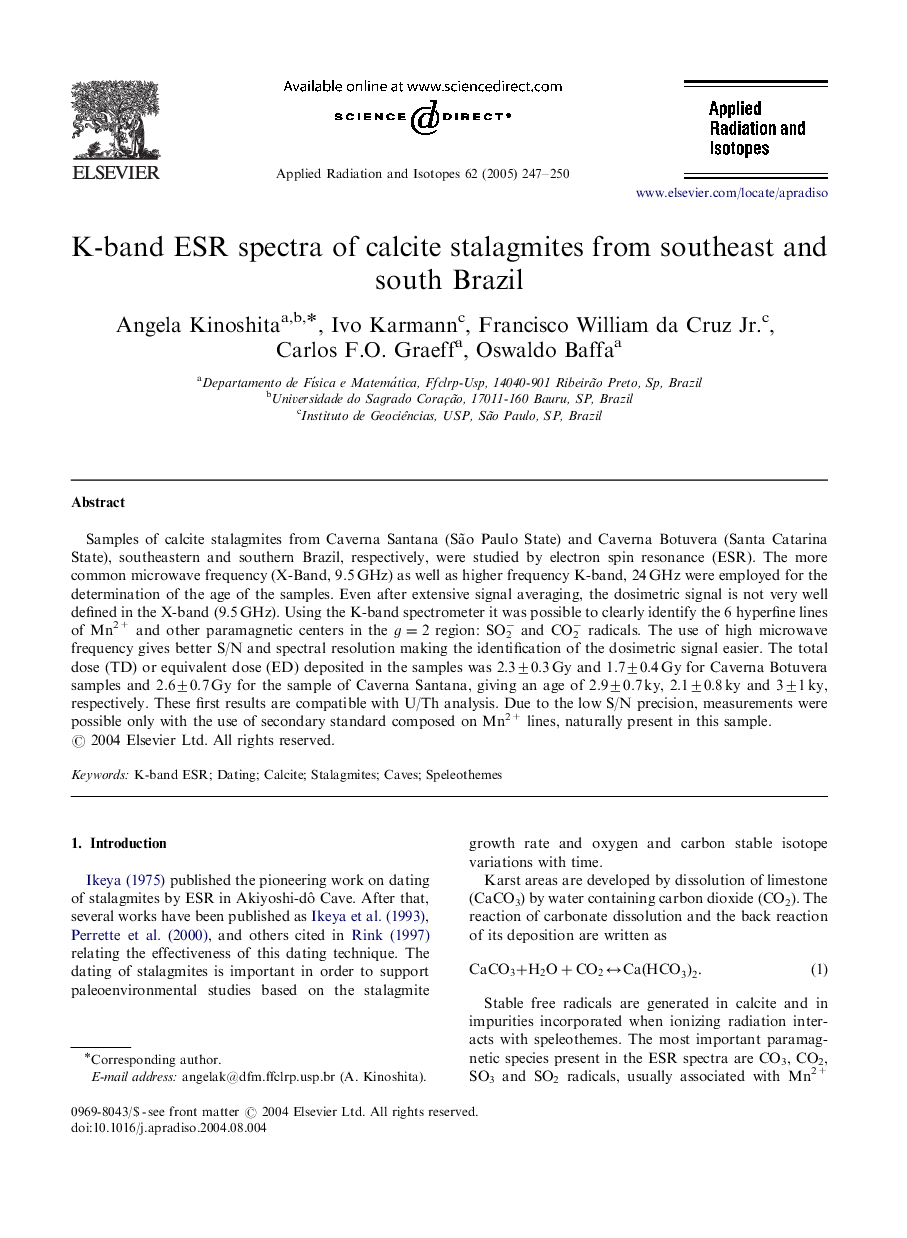| Article ID | Journal | Published Year | Pages | File Type |
|---|---|---|---|---|
| 10730232 | Applied Radiation and Isotopes | 2005 | 4 Pages |
Abstract
Samples of calcite stalagmites from Caverna Santana (São Paulo State) and Caverna Botuvera (Santa Catarina State), southeastern and southern Brazil, respectively, were studied by electron spin resonance (ESR). The more common microwave frequency (X-Band, 9.5 GHz) as well as higher frequency K-band, 24 GHz were employed for the determination of the age of the samples. Even after extensive signal averaging, the dosimetric signal is not very well defined in the X-band (9.5 GHz). Using the K-band spectrometer it was possible to clearly identify the 6 hyperfine lines of Mn2+ and other paramagnetic centers in the g=2 region: SO2â and CO2â radicals. The use of high microwave frequency gives better S/N and spectral resolution making the identification of the dosimetric signal easier. The total dose (TD) or equivalent dose (ED) deposited in the samples was 2.3±0.3 Gy and 1.7±0.4 Gy for Caverna Botuvera samples and 2.6±0.7 Gy for the sample of Caverna Santana, giving an age of 2.9±0.7 ky, 2.1±0.8 ky and 3±1 ky, respectively. These first results are compatible with U/Th analysis. Due to the low S/N precision, measurements were possible only with the use of secondary standard composed on Mn2+ lines, naturally present in this sample.
Keywords
Related Topics
Physical Sciences and Engineering
Physics and Astronomy
Radiation
Authors
Angela Kinoshita, Ivo Karmann, Francisco Jr., Carlos F.O. Graeff, Oswaldo Baffa,
